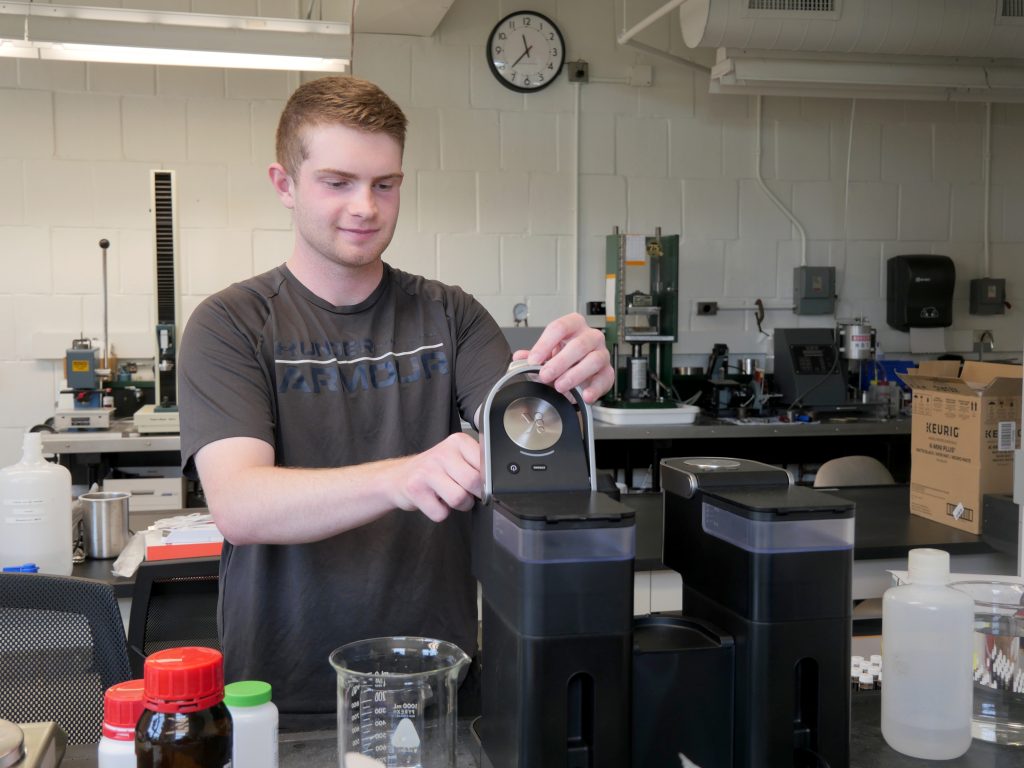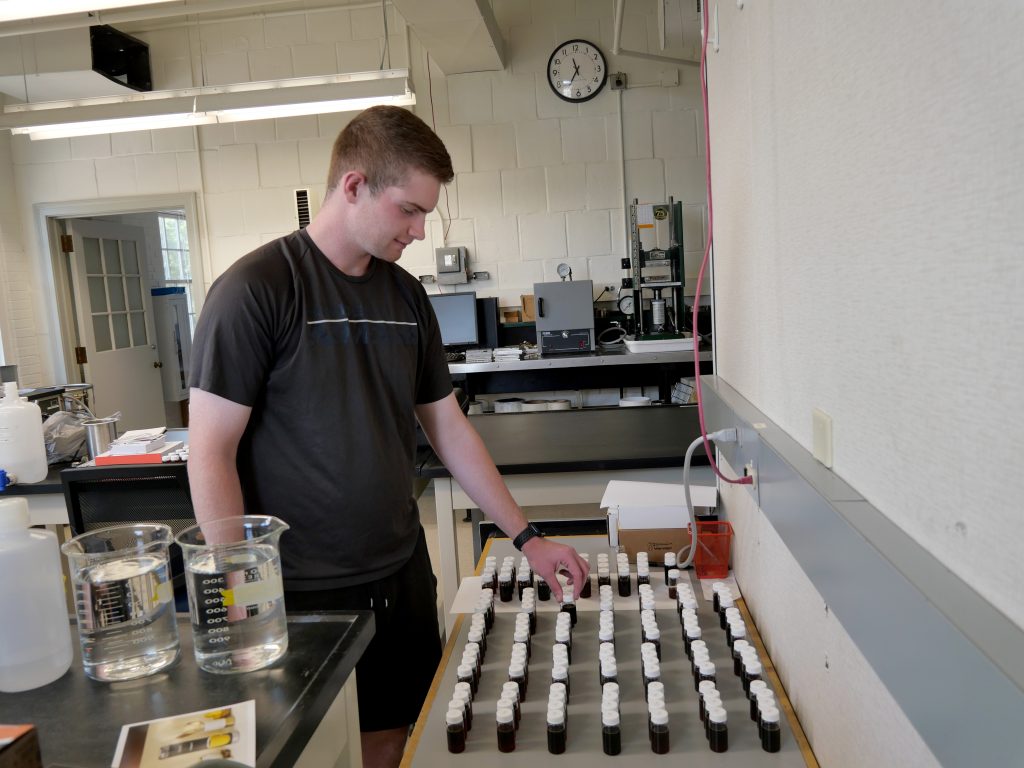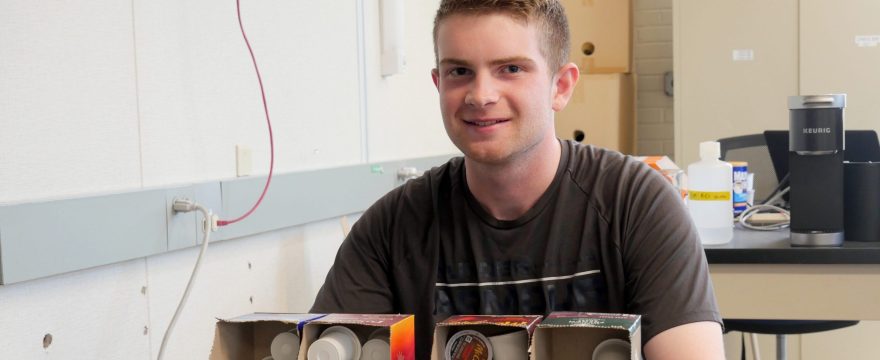This summer, Bucknell engineering students are researching the health of nearby waterways, creating gel shoe inserts from polymers and developing robots that can make firefighting safer, among other topics, but Ryan Koes ’26, computer science and engineering, might have the most envious research subject of them all: coffee.
Coffee is the most popular drink worldwide, with more than two billion cups consumed every day. Koes is brewing hundreds of cups over a 10-week span this summer to analyze their electrochemical principles and classify characteristics of coffee. By utilizing machine learning, he plans to put a quantifiable descriptor on the coffee taste, determine other coffees that are similar to it and provide other relevant information for the user to explore their world of coffee.
The title of the project is A Machine Learning-Enhanced Electronic Tongue for the Unbiased Characterization of Coffee but there won’t be a prosthetic tongue on a table at the end of the summer. The electronic tongue will have the ability to make quantitative, unbiased characterizations of coffee, though. And Koes thinks the project could result in the ability for a coffee drinker to purchase a subscription to a website or app that will share key data about different coffee and how it relates to the user’s preferences.
Koes is leaning heavily on his computer science background while working on this project with Associate Professor of Computer Science Alan Marchiori. But the project also incorporates chemical engineering and chemistry principles, and thus he has a second research adviser, Professor of Chemical Engineering Kat Wakabayashi.
“By collaborating with individuals from the chemical engineering, computer science and business departments, I’ve been able to embrace the interdisciplinarity of this project,” says Koes. “I’ve always enjoyed contributing to interdisciplinary projects through coursework and clubs, so I’ve been thrilled to explore that aspect this summer.”

The research is funded by the Reed-Garman Award for Engineering Entrepreneurship, which specifies that a student’s work will be entrepreneurially minded. Because of that, Koes started the summer by meeting with representatives from Bucknell’s Small Business Development Center (SBDC).
“The conversations with the SBDC helped a lot,” says Koes. “I haven’t taken any business classes, so there was a lot of terminology that I quickly learned. There were several business exercises that we went through.”
Koes has kept those conversations in the back of his mind throughout the project. He entered the summer targeting his product as something physical for the end user but also considered how a company might use it, before settling on the website or app idea.
Quantifying coffee can be a daunting task. Typically, coffee is graded on a scale of zero to 100 by a trained professional. While Koes would love to have a similar rating system, it can be very subjective, and he is focusing on more objective classifications.
“If we can get a database of a lot of different coffees, we can tell people where they land on the coffee spectrum,” explains Koes. “We can know that people who like Folgers may also like Maxwell House.”
Koes is slowly building a database that helps to classify coffee at a high accuracy rate. He is doing this by brewing samples of coffee and using a potentiostat to read the peaks of caffeine and chlorogenic acid, which heavily influences the taste profile of coffee. Koes has recently been using high-performance liquid chromatography (HPLC) to calibrate the device for the determination of caffeine and chlorogenic acid content.
“If we get a known reading of the caffeine and chlorogenic acid in several different coffees, we can use machine learning to train a model that can predict what another coffee’s percentage will be,” Koes says.
Koes started experimenting with a handful of household brand name coffees, such as McCafé, Starbucks, Folgers and Maxwell House, as well as Fresh Roasted Coffee, based in nearby Sunbury. He brews each pod using a Keurig machine for consistency since the same amount of water is used each time, the temperature is the same and the nozzle sprays the same every time.
The hundreds of vials are neatly organized in Koes’ lab on the second floor of Dana Engineering Building, an eye-catching way to see the amount of work he’s done. Each one of the vials had to be run through a machine learning model with Koes then performing daily statistical analysis.

“The machine learning part is the thing I’ve learned the most this summer,” says Koes. “It’s been fun working with that since I haven’t done any machine learning projects yet. It really pulled me into the project and I’ve been trying to learn more.”
Of course, the draw of coffee also pulled Koes into the project.
“My appreciation for coffee has grown,” says Koes. “I knew the world of wine was very specialized. But I never thought about coffee the same way. I’ve learned a lot about coffee and the industry.”
